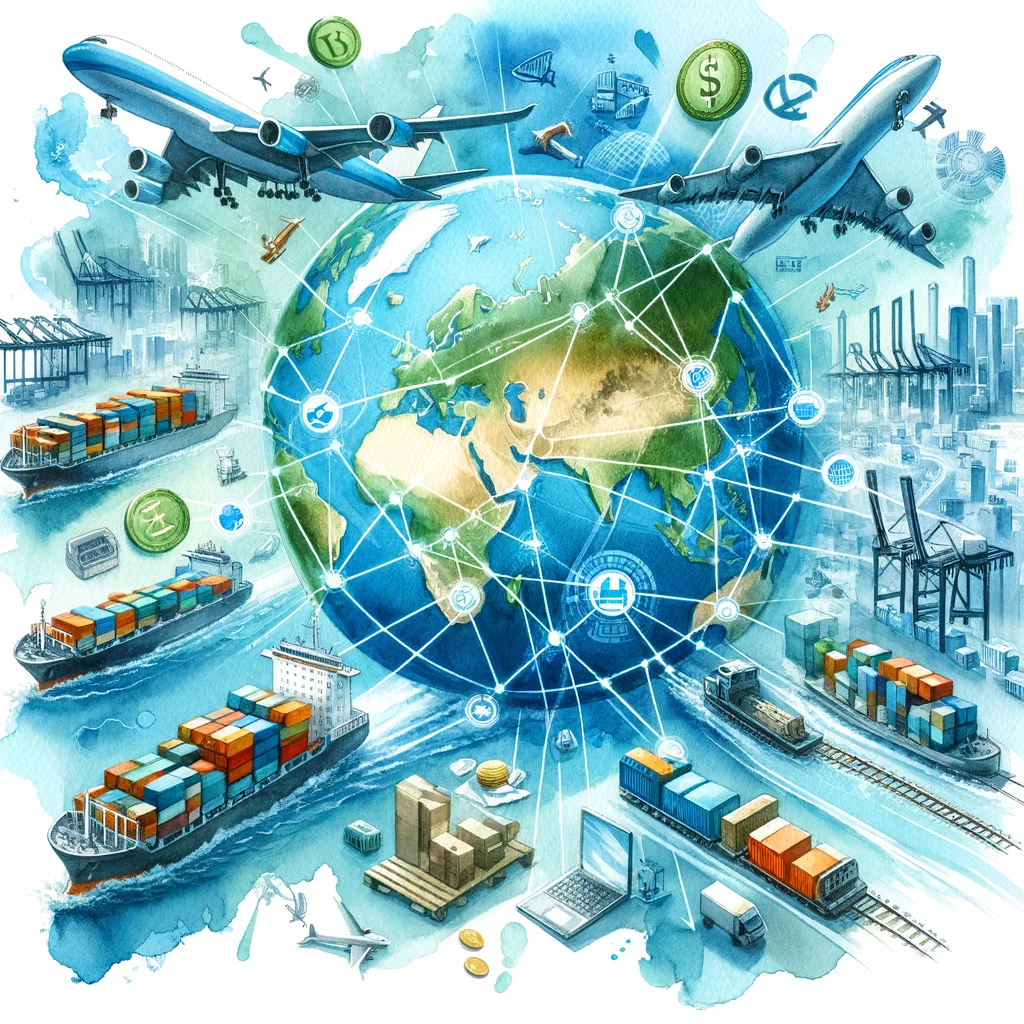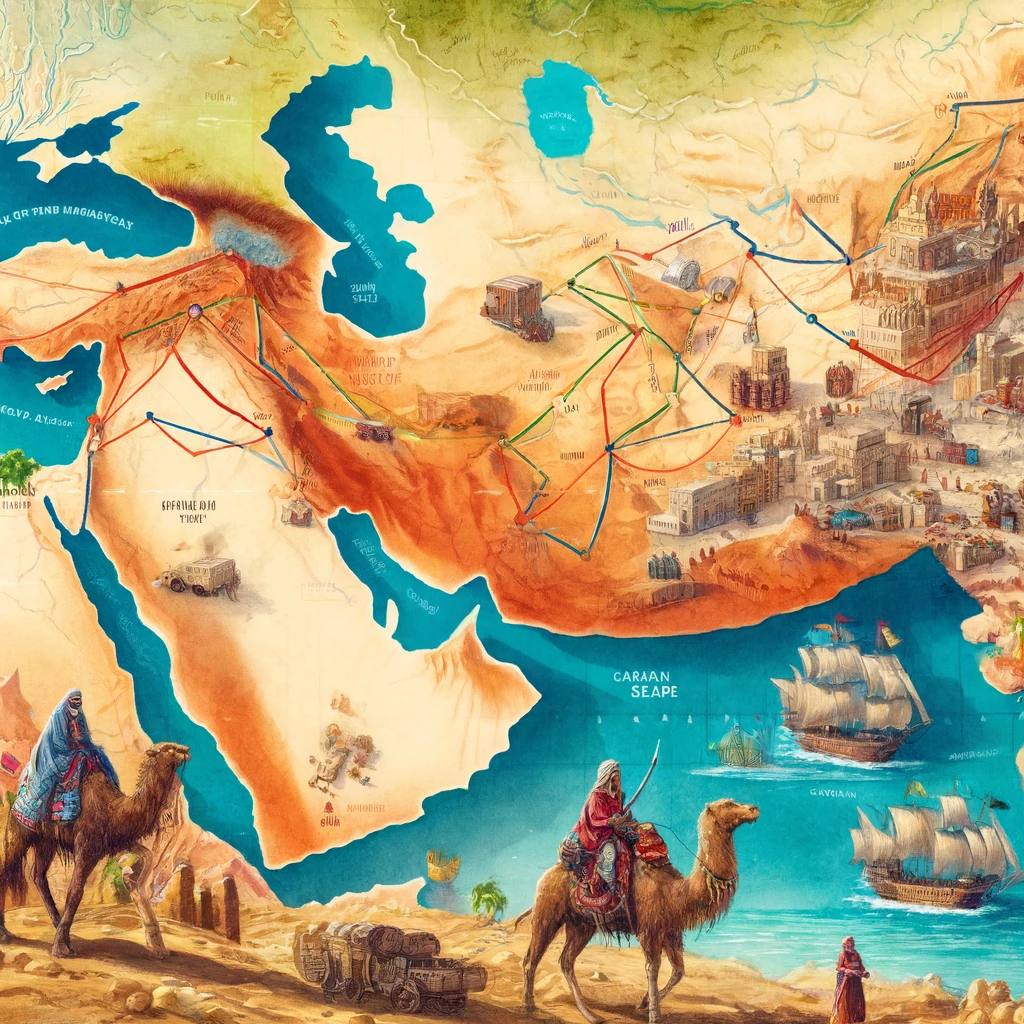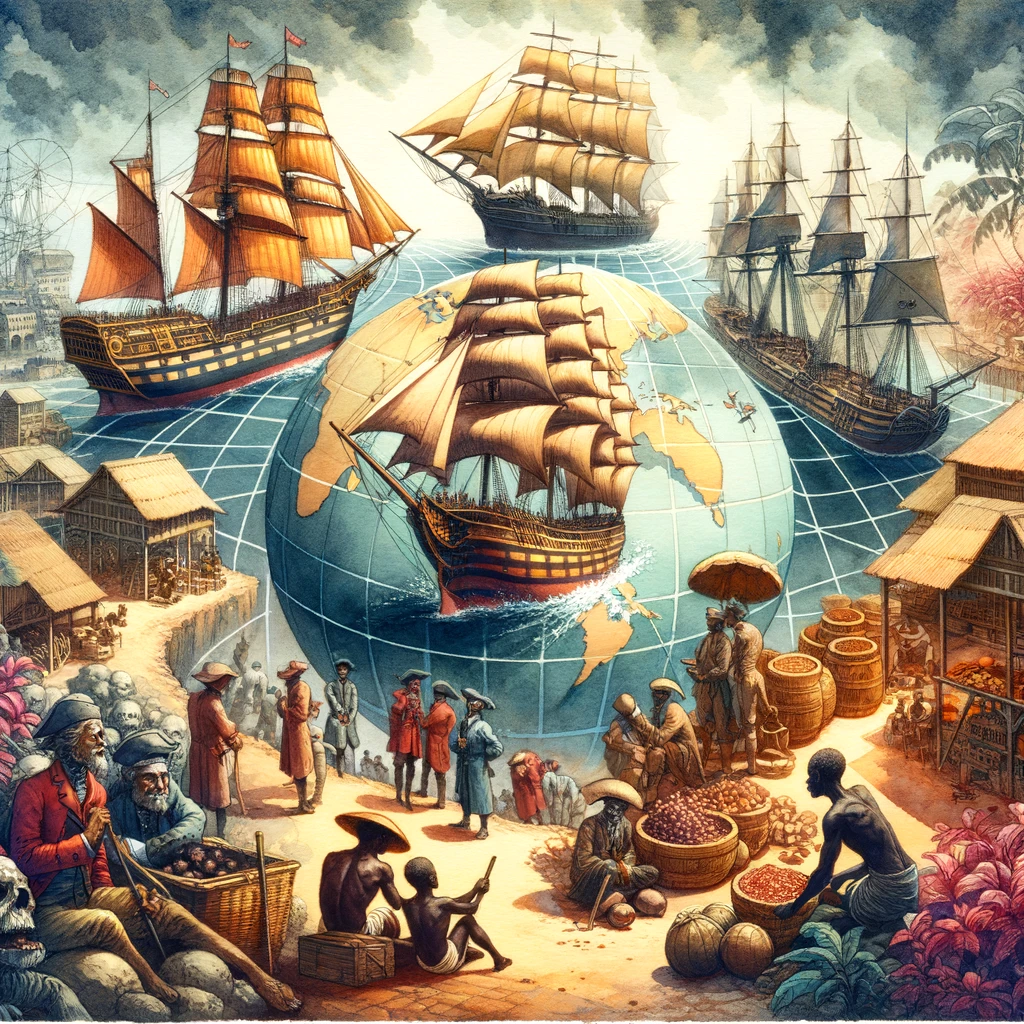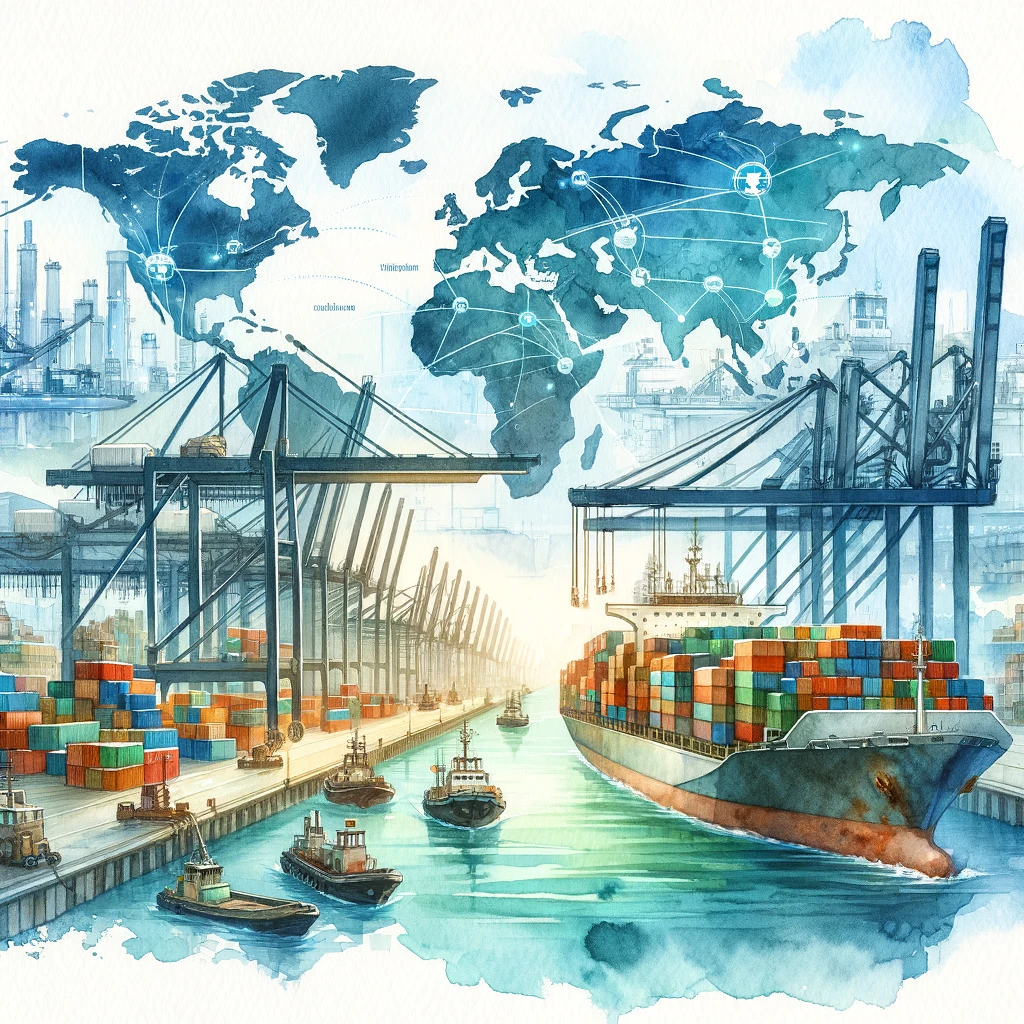Global Trade plays a vital role in connecting economies across the world. It allows countries to exchange goods, services, and technologies, promoting economic growth and development. By fostering international relationships, Global Trade enables access to diverse markets, contributing to the overall prosperity of nations. However, it also faces challenges such as trade barriers, tariffs, and global competition.
- Global Trade enhances access to goods and services that are otherwise unavailable domestically.
- It promotes innovation by encouraging competition and the adoption of new technologies.
- Global Trade supports economic growth by expanding market opportunities for businesses worldwide.

History and Evolution of Global Trade
The history and evolution of global trade span centuries, from ancient barter systems to modern free trade agreements, shaping economies, fostering international relations, and driving global economic growth and development.
Silk Road and Spice Trade
The Silk Road was one of the earliest and most significant trade routes, linking China with Europe and facilitating the exchange of goods, ideas, and cultures. Established around 130 BCE, it spanned over 4,000 miles, passing through Central Asia, the Middle East, and into the Mediterranean. The Silk Road was named after the lucrative silk trade from China but also saw the exchange of spices, textiles, precious metals, and other commodities.
The spice trade, particularly from the Indian subcontinent and Southeast Asia, was another crucial early trade network. Spices like pepper, cinnamon, and cloves were highly sought after in Europe for their culinary and preservative properties. The spice trade routes extended from the East Indies through the Arabian Peninsula to Europe, significantly influencing the economies and cultures of the regions involved.

Role of Maritime Trade and Exploration
Maritime trade played a vital role in the expansion of global trade networks. The development of advanced navigation techniques and shipbuilding technologies allowed for long-distance sea voyages. The Age of Exploration, beginning in the 15th century, saw European explorers like Vasco da Gama and Christopher Columbus discovering new sea routes to Asia, Africa, and the Americas. This era of exploration facilitated the direct exchange of goods and resources across continents, leading to the establishment of colonies and the spread of European influence globally.
Development of Trade Hubs and Centers
Trade hubs and centers, such as Alexandria in Egypt, Venice in Italy, and Timbuktu in Mali, emerged as crucial points for the exchange of goods and culture. These cities were strategically located along major trade routes and served as meeting points for merchants from different regions. They played a pivotal role in the dissemination of commodities, knowledge, and cultural practices, fostering economic growth and development in their respective regions.

Colonialism and Mercantilism
Colonialism and mercantilism were economic systems where powerful nations exploited colonies for resources. Mercantilism emphasized controlling trade to increase national wealth, fueling imperial expansion and global dominance during the colonial era.
Impact of Colonial Policies on Global Trade
The era of colonialism, spanning from the 16th to the 20th centuries, had a profound impact on global trade. European powers, driven by mercantilist policies, established colonies in Asia, Africa, and the Americas to secure access to valuable resources and markets. Colonies were often exploited for their raw materials, such as spices, sugar, cotton, and minerals, which were exported to Europe. The colonies also served as markets for European manufactured goods.
Colonial policies were characterized by monopolistic trade practices, where colonial powers restricted trade to benefit their own economies. The colonies were often prohibited from trading with other nations, ensuring that the wealth generated from colonial resources flowed back to the colonizing country.
Evolution of Trade Monopolies
Trade monopolies emerged during the colonial period, with entities like the British East India Company and the Dutch East India Company gaining exclusive rights to trade in specific regions. These companies wielded significant economic and political power, controlling vast territories and resources. The monopolistic control over trade allowed these companies to influence global market prices and maintain dominance over strategic trade routes and commodities.
Economic Consequences for Colonized Regions
The colonial trade system had significant economic consequences for the colonized regions. While it led to the development of infrastructure, such as ports and railways, primarily to facilitate the extraction of resources, it also resulted in the economic exploitation and underdevelopment of the colonies. The focus on extracting raw materials for export hindered the development of local industries and economies, leaving many colonies dependent on the colonial powers for manufactured goods and economic stability.

Post-World War II Trade Expansion
Post-World War II trade expansion marked a shift towards global cooperation, with institutions like GATT and later the WTO promoting free trade, reducing tariffs, and fostering international economic growth and development.
Formation of GATT and WTO
The devastation of World War II highlighted the need for a stable and cooperative international trade system. In 1947, the General Agreement on Tariffs and Trade (GATT) was established to promote free trade by reducing tariffs and other trade barriers. GATT played a crucial role in fostering economic recovery and growth in the post-war period by facilitating international trade and economic cooperation.
In 1995, the World Trade Organization (WTO) was formed to replace GATT, providing a more comprehensive framework for international trade. The WTO expanded on GATT’s principles, covering not only trade in goods but also services, intellectual property, and dispute resolution. It has since become the primary institution for managing global trade rules and facilitating negotiations among member countries.
Rise of Free Trade Agreements and Economic Blocs
The post-war period saw a significant increase in the number of free trade agreements (FTAs) and the formation of economic blocs. Regional agreements like the North American Free Trade Agreement (NAFTA) and the European Economic Community (EEC, now the European Union) aimed to promote economic integration and reduce trade barriers among member countries.
These agreements have facilitated the growth of regional trade by eliminating tariffs, harmonizing regulations, and promoting investment flows. They have also contributed to the emergence of global supply chains, where production processes are spread across multiple countries, leveraging the comparative advantages of each.
Growth of Multinational Corporations and Global Supply Chains
The expansion of global trade has been accompanied by the rise of multinational corporations (MNCs), which operate in multiple countries and play a central role in global economic activity. MNCs have driven the development of global supply chains, where production and distribution are coordinated across different regions to optimize costs and efficiency.
This interconnected network of production has transformed the global economy, leading to greater economic integration and interdependence among countries. It has also facilitated the spread of technology and innovation, contributing to economic growth and development worldwide.
Current Trends in Global Trade
Digital Trade and E-Commerce
The digital revolution has transformed global trade by enabling the rapid exchange of goods, services, and information across borders. E-commerce platforms like Amazon, Alibaba, and eBay have revolutionized retail by allowing consumers to purchase products from around the world with a click of a button. Digital trade has expanded beyond physical goods to include services, such as software, digital content, and financial services, further integrating global markets.
The rise of digital trade has also facilitated the growth of small and medium-sized enterprises (SMEs) by providing access to international markets and reducing the barriers to entry. This trend is expected to continue, with digital technologies playing an increasingly central role in global trade.
Shift Towards Services and Knowledge Economy
While traditional trade in goods remains important, there has been a significant shift towards services and the knowledge economy. Services such as finance, education, healthcare, and information technology now constitute a substantial portion of international trade. The globalization of services has been facilitated by advances in technology and communication, enabling companies to offer services remotely and access new markets.
The knowledge economy, characterized by the production and exchange of knowledge-based goods and services, has become a key driver of economic growth. Countries and companies that invest in education, research, and innovation are better positioned to compete in the global market and benefit from the opportunities created by the digital economy.
Regional Trade Agreements and New Trade Corridors
Regional trade agreements (RTAs) continue to play a significant role in shaping global trade. Agreements such as the Comprehensive and Progressive Agreement for Trans-Pacific Partnership (CPTPP) and the African Continental Free Trade Area (AfCFTA) aim to enhance economic integration and boost trade among member countries.
New trade corridors, such as China’s Belt and Road Initiative (BRI), are also emerging, creating new opportunities for trade and investment. The BRI, for example, aims to connect Asia, Europe, and Africa through a network of infrastructure projects, promoting economic cooperation and development along the route.
Future of Global Trade
Challenges from Protectionism and Trade Wars
One of the significant challenges facing global trade is the rise of protectionism and trade wars. In recent years, there has been an increase in trade tensions, particularly between major economies like the United States and China. These tensions have led to the imposition of tariffs, trade barriers, and retaliatory measures, disrupting global supply chains and economic growth.
Protectionism threatens the benefits of free trade by reducing market access, increasing costs for consumers and businesses, and slowing economic growth. Addressing these challenges requires effective international cooperation and the reinforcement of the rules-based global trade system.
Impact of Technology and Innovation
Technology and innovation will continue to shape the future of global trade. Advances in digital technologies, such as artificial intelligence, blockchain, and 3D printing, are transforming production processes and trade practices. These technologies have the potential to increase efficiency, reduce costs, and create new opportunities for trade and investment.
However, the rapid pace of technological change also presents challenges, including the need to address issues related to data privacy, cybersecurity, and the digital divide. Ensuring that the benefits of technological innovation are widely shared will be crucial for promoting inclusive and sustainable trade.
Sustainable Trade and Climate Change Implications
Sustainable trade is becoming increasingly important as countries seek to balance economic growth with environmental protection. Trade policies and practices must adapt to address the challenges of climate change, including reducing carbon emissions, promoting renewable energy, and protecting natural resources.
Initiatives such as the Paris Agreement highlight the need for international cooperation to promote sustainable development and trade. The future of global trade will likely involve greater emphasis on environmental standards, sustainable supply chains, and the circular economy, where resources are reused and recycled to minimize waste.
Data Reference Points:
- Silk Road: The Silk Road spanned over 4,000 miles, facilitating trade between China and Europe.
- GATT/WTO: GATT was established in 1947, and the WTO replaced it in 1995, providing a framework for international trade.
- Digital Trade: E-commerce has grown significantly, with global online sales estimated to reach $4.9 trillion by 2021.
Conclusion
This article provides a comprehensive overview of the history and evolution of global trade, current trends, and future prospects, offering valuable insights for understanding the complexities and dynamics of the global economy. It serves as an informative resource for those interested in the development and impact of international trade.

